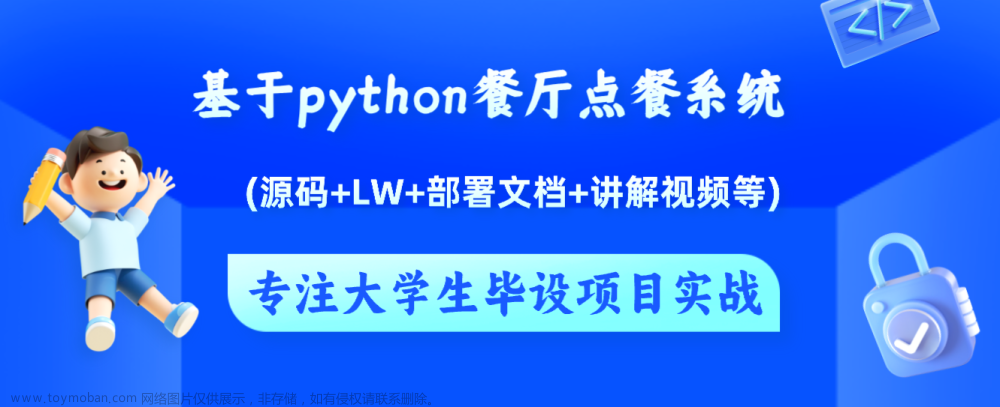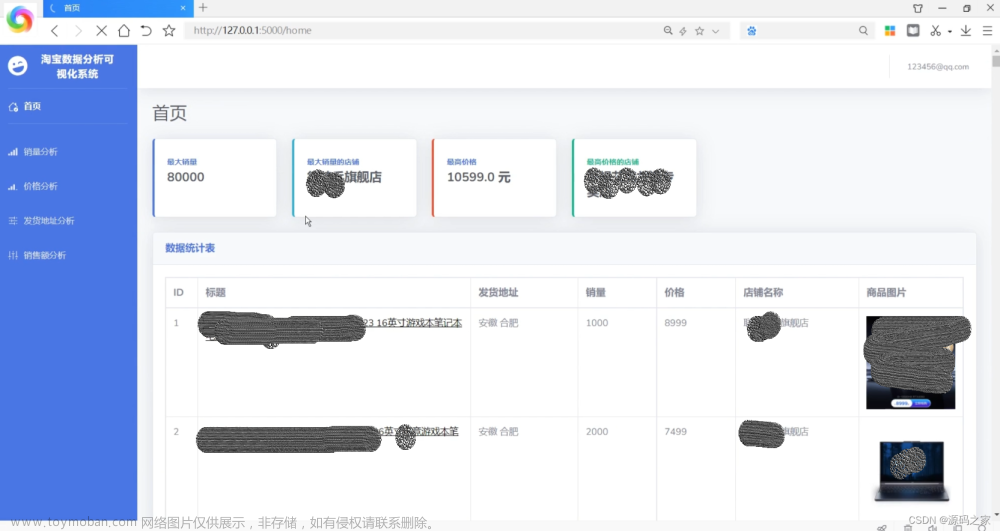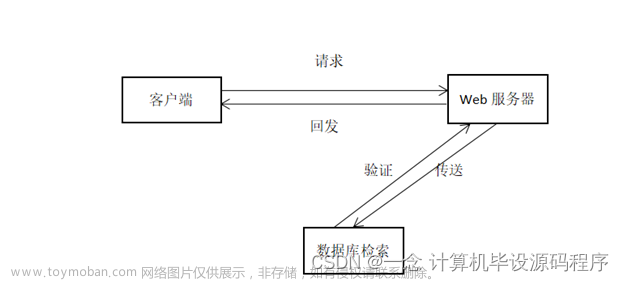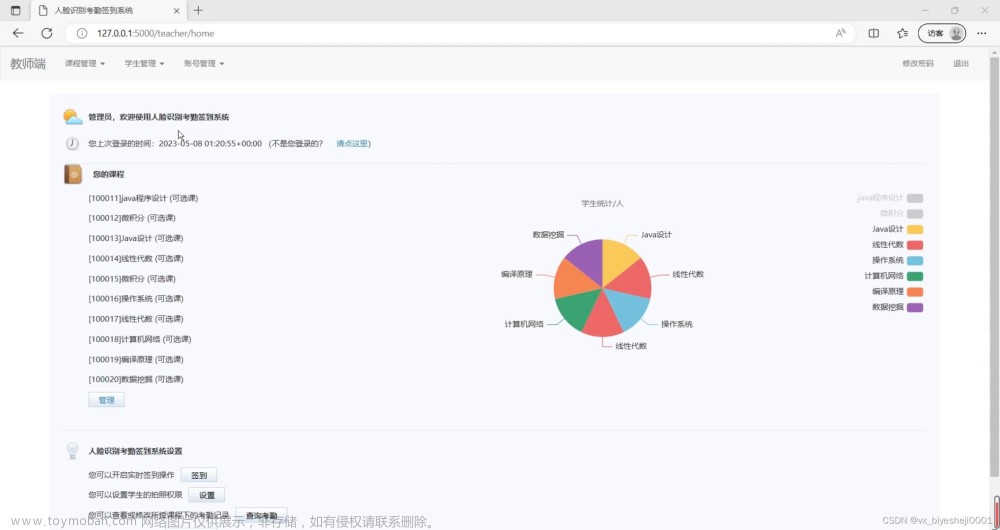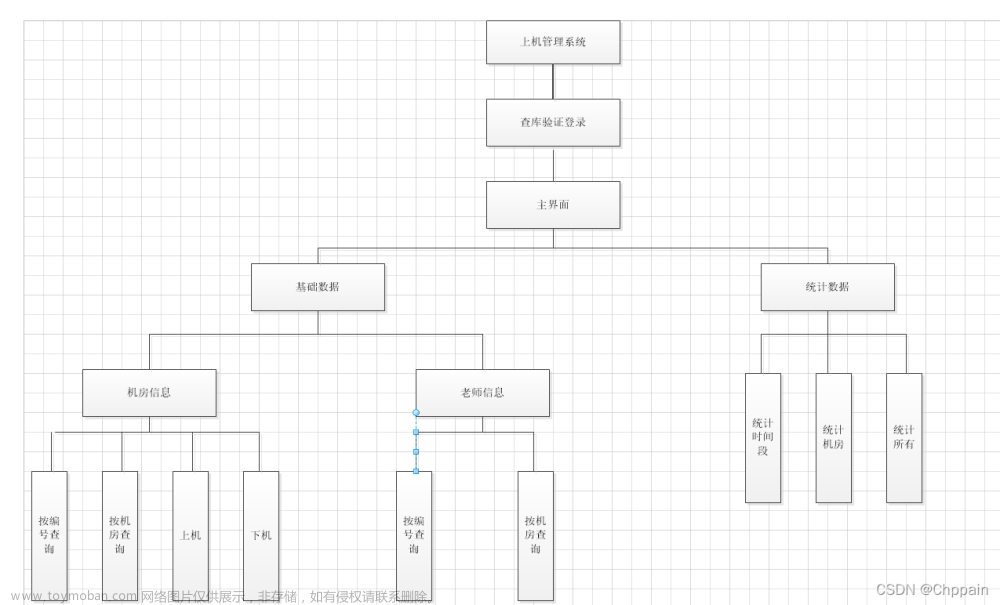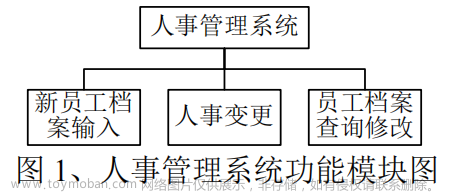一、系统需求分析
需求分析首先要确定研究分析的对象,这里的需求分析对象有两方:买家和卖家。
对于买家,需求是能够进行线上点餐,具体可以细化为:能够在线上获得餐品信息和进行点餐行为。买家作为消费者,都想得到更为优质的服务体验,希望能够通过较为简单顺利的操作就可以吃到满足自己口味的菜肴。这就要求系统界面能够生动形象地有效呈现出点餐的各项信息,菜品的价格,可以选择就坐的餐桌的数目等情况以及加餐时简洁的操作界面。
对于卖家,需求是能够对菜品进行增查删改以及增加会员,具体可以细化为,能够线上获得全部的菜品信息,添加菜品,修改菜品价格,删除菜品,增加会员。卖家即为商家,商家要能够高效地获取这些的信息,当然是图形化界面和几何形式的信息呈现最为直接明了。
二、系统设计
1. 功能结构设计

2、概念设计
2.2.1 bill_food表E-R图

2.2.2 bills表E-R图

2.2.3 categories E-R图

2.2.4 discounts表 E-R图

2.2.5 emp表E-R图

2.2.6 food 表E-R图

2.2.7 member表E-R图

2.2.8 member_point_bill表E-R图

2.2.9 servers表E-R图

2.2.10 tables表E-R图

2.2.11 user表E-R图

3. 逻辑设计(表的设计)
①bill_food表
CREATE TABLE `bill_food` (
`id_food` int NOT NULL,
`id_bill` int NOT NULL,
`num` int NOT NULL,
PRIMARY KEY (`id_food`,`id_bill`),
KEY `FK_bill_food2` (`id_bill`),
CONSTRAINT `FK_bill_food` FOREIGN KEY (`id_food`) REFERENCES `food` (`id_food`) ON DELETE RESTRICT ON UPDATE RESTRICT,
CONSTRAINT `FK_bill_food2` FOREIGN KEY (`id_bill`) REFERENCES `bills` (`id_bill`) ON DELETE RESTRICT ON UPDATE RESTRICT
) ;

②bills表
CREATE TABLE `bills` (
`id_bill` int NOT NULL,
`id_table` int NOT NULL,
`id_member` int DEFAULT NULL,
`time_order` datetime NOT NULL,
`time_pay` datetime DEFAULT NULL,
`money` int NOT NULL,
PRIMARY KEY (`id_bill`),
KEY `FK_bill_member` (`id_member`),
KEY `FK_table_bill` (`id_table`),
KEY `time_order` (`time_order`),
CONSTRAINT `FK_bill_member` FOREIGN KEY (`id_member`) REFERENCES `member` (`id_member`) ON DELETE RESTRICT ON UPDATE RESTRICT,
CONSTRAINT `FK_table_bill` FOREIGN KEY (`id_table`) REFERENCES `tables` (`id_table`) ON DELETE RESTRICT ON UPDATE RESTRICT
) ;

③categories表
CREATE TABLE `categories` (
`category` char(20) NOT NULL,
PRIMARY KEY (`category`)
);

④discounts表
CREATE TABLE `discounts` (
`id_discount` int NOT NULL,
`off_price` int NOT NULL,
`require_points` int NOT NULL,
PRIMARY KEY (`id_discount`)
) ;

⑤emp表
CREATE TABLE `emp` (
`id_emp` int NOT NULL,
`id_server` int DEFAULT NULL,
`name_emp` char(20) NOT NULL,
`sex_emp` char(1) DEFAULT NULL,
`phone_num` char(11) DEFAULT NULL,
`position` char(20) DEFAULT NULL,
PRIMARY KEY (`id_emp`)
);

⑥food表
CREATE TABLE `food` (
`id_food` int NOT NULL,
`category` char(20) NOT NULL,
`name_food` char(20) NOT NULL,
`introduction` char(100) DEFAULT NULL,
`price` int NOT NULL,
`url` char(100) DEFAULT NULL,
PRIMARY KEY (`id_food`),
KEY `FK_food_category` (`category`),
CONSTRAINT `FK_food_category` FOREIGN KEY (`category`) REFERENCES `categories` (`category`) ON DELETE RESTRICT ON UPDATE RESTRICT
) ;

⑦member表
CREATE TABLE `member` (
`id_member` int NOT NULL,
`name_member` char(20) DEFAULT NULL,
`points` int NOT NULL,
`sex` char(1) DEFAULT NULL,
`phone_num` char(11) DEFAULT NULL,
PRIMARY KEY (`id_member`)
) ;

⑧member_point_bills表
CREATE TABLE `member_point_bill` (
`id_point_bill` int NOT NULL,
`id_member` int NOT NULL,
`time_point` datetime NOT NULL,
`point` int NOT NULL,
`note` char(20) DEFAULT NULL,
PRIMARY KEY (`id_point_bill`),
KEY `FK_member_point_bill` (`id_member`),
CONSTRAINT `FK_member_point_bill` FOREIGN KEY (`id_member`) REFERENCES `member` (`id_member`) ON DELETE RESTRICT ON UPDATE RESTRICT
) ;

⑨servers表
CREATE TABLE `servers` (
`id_server` int NOT NULL,
`id_emp` int NOT NULL,
PRIMARY KEY (`id_server`),
KEY `FK_to_server` (`id_emp`),
CONSTRAINT `FK_to_server` FOREIGN KEY (`id_emp`) REFERENCES `emp` (`id_emp`) ON DELETE RESTRICT ON UPDATE RESTRICT
) ;

⑩tables表
CREATE TABLE `tables` (
`id_table` int NOT NULL,
`id_server` int NOT NULL,
`num_people` int NOT NULL,
`id_bill` int DEFAULT NULL,
`id_member` int DEFAULT NULL,
PRIMARY KEY (`id_table`),
KEY `FK_server_table` (`id_server`),
CONSTRAINT `FK_server_table` FOREIGN KEY (`id_server`) REFERENCES `servers` (`id_server`) ON DELETE RESTRICT ON UPDATE RESTRICT
) ;

11.user表
CREATE TABLE `user` (
`user_id` varchar(4) CHARACTER SET utf8 COLLATE utf8_general_ci NOT NULL,
`user_password` varchar(255) NOT NULL,
`user_name` varchar(255) DEFAULT NULL,
`user_position` varchar(255) DEFAULT NULL,
PRIMARY KEY (`user_id`)
);

三、 系统实现(主要体现以下几部分)
1、系统采用的技术、方法、工具
餐厅点餐系统采用pycharm tkinter库实现可视化,数据库管理用MySQL
2、效果图


其他图就不展示了文章来源:https://www.toymoban.com/news/detail-465996.html
3、实现代码
2.1 main.py
def is_number(s):
try:
float(s)
return True
except ValueError:
pass
try:
import unicodedata
unicodedata.numeric(s)
return True
except (TypeError, ValueError):
pass
return False
# window
import tkinter.messagebox
import tkinter as tk # 使用Tkinter前需要先导入
import order
import statistic
from database import *
import reig_manage
table = db_get_table()
#实例化
window_table = tk.Tk()
window_table.title('选择餐桌')
window_table.geometry('300x400')
window_table['bg']='#d0c0c0'
listbox_table = tk.Listbox(window_table, listvariable = table)
#listbox_table['bg']='#9ea4b8'
for table_item in table:
listbox_table.insert("end", table_item+" "+table[table_item][0])
listbox_table.pack()
#
e_member = tk.Entry(window_table, show=None, font=('Arial', 14))
e_member.insert(0,"输入会员号")
e_member['bg']='#f8f0e0'
e_member.pack()
def submit_table():
if listbox_table.curselection() == ():
tkinter.messagebox.showinfo(title='警告', message='请点击框内餐桌再选择')
return
table_item = listbox_table.get(listbox_table.curselection())
occupied = table[table_item[0:3]][0]
if occupied=="占用":
tkinter.messagebox.showinfo(title='警告', message='当前餐桌有人')
return
table_num = int(table_item[2:3])
next_bill = db_sit(table_num)
window_table.withdraw()
member_id = e_member.get()
if is_number(member_id):
member_id = int(member_id)
else:
member_id = None
order.open_order_table(table_num,next_bill,member_id)
def enter_statistic():
#window_table.withdraw()
statistic.open()
#登录
def enter_manage():
# window_table.withdraw()
reig_manage.register_manage()
#打样
def close_shop():
db_clear_table()
table = db_get_table()
listbox_table.delete(0,"end")
for table_item in table:
listbox_table.insert("end", table_item+" "+table[table_item][0])
button_select_table = tk.Button(window_table, text='选择', width=15, height=2, command=submit_table)
button_select_table.pack()
button_statistic = tk.Button(window_table, text='进入后台统计界面', width=15, height=2, command=enter_statistic)
button_statistic.pack()
button_statistic = tk.Button(window_table, text='管理人员登录', width=15, height=2, command=enter_manage)
button_statistic.pack()
button_statistic = tk.Button(window_table, text='打烊', width=15, height=2, command=close_shop)
button_statistic.pack()
# 第7步,主窗口循环显示
window_table.mainloop()
2.2 reig_manage.py
import tkinter as tk # 使用Tkinter前需要先导入
from tkinter import messagebox
from database_manage import *
import manage
from tkinter import *
def register_manage():
window = tk.Toplevel()
window.title('后台登录页面')
window['bg'] = '#d0c0c0'
window.geometry('300x300')
Label(window, text='管理人员登录').grid(row=0, column=0, columnspan=2)
Label(window, text='用户名:').grid(row=1, column=0)
name = Entry(window)
name.grid(row=1, column=1)
Label(window, text='密码:').grid(row=2, column=0, sticky=E)
passwd = Entry(window, show='*')
passwd.grid(row=2, column=1)
def successful():
falg=db_get_user111(name,passwd)
if falg==1:
window.destroy()
manage.show()
else:
messagebox.showerror(title='wrong', message='登录失败,用户名或密码错误')
Button(window, text='登录', command=successful).grid(row=3, column=0, columnspan=2)
2.3 statistic.py
import tkinter.messagebox
import tkinter as tk # 使用Tkinter前需要先导入
from database import *
def open():
# 实例化object,建立窗口window
window = tk.Toplevel()
window.title('统计页面')
window['bg']='#d0c0c0'
window.geometry('300x500')
data = []
# 存放统计结果
listbox = tk.Listbox(window, listvariable=data)
# 日期输入框
e_start = tk.Entry(window, show=None, font=('Arial', 14))
e_start.insert(0,"起始日期")
e_end = tk.Entry(window, show=None, font=('Arial', 14)) # 显示成明文形式
e_end.insert(0,"终止日期")
label_money = tk.Label(window, width=40, text="时间段内销售总额:空(请点击查询)")
def get_sales():
sales = db_get_sales()
listbox.delete(0,"end")
for sale in sales:
listbox.insert("end",sale[0]+" 销售量"+str(sale[1]))
def get_sales_time():
start_date = e_start.get()
end_date = e_end.get()
try:
datetime.datetime.strptime(start_date, '%Y-%m-%d')
datetime.datetime.strptime(end_date, '%Y-%m-%d')
except ValueError:
tkinter.messagebox.showinfo(title='警告', message='日期不合法,范例2021-02-03')
return
sales = db_get_sales_time(start_date, end_date)
listbox.delete(0,"end")
if sales == ():
tkinter.messagebox.showinfo(title='提示', message='该时间段没有销售')
for sale in sales:
listbox.insert("end",sale[0]+" 销售量"+str(sale[1]))
def get_money_time():
start_date = e_start.get()
end_date = e_end.get()
try:
datetime.datetime.strptime(start_date, '%Y-%m-%d')
datetime.datetime.strptime(end_date, '%Y-%m-%d')
except ValueError:
tkinter.messagebox.showinfo(title='警告', message='日期不合法,范例2021-02-03')
return
money = db_get_money_time(start_date, end_date)
if money == None:
tkinter.messagebox.showinfo(title='提示', message='该时间段没有销售')
return
label_money.config(text = "时间段内销售总额:"+str(money)+"元(点击第三个按钮刷新)")
button_sales = tk.Button(window, text='按菜品销量排序(总)', width=20, height=2, command=get_sales)
button_sales_time = tk.Button(window, text='按时间段销量排序', width=20, height=2, command=get_sales_time)
button_sales_total = tk.Button(window, text='查询某时间段内销售总额', width=20, height=2, command=get_money_time)
button_sales.pack()
button_sales_time.pack()
button_sales_total.pack()
e_start.pack()
e_end.pack()
listbox.pack()
label_money.pack()
window.mainloop()
2.4 order.py
import tkinter.messagebox
import tkinter as tk # 使用Tkinter前需要先导入
import discount
from database import *
food = {}
bills = []
# # bill_id = 0
# member_id = 3
# # server_id = 7
# member_cent = 0
# server_id = 0
food = db_get_all_food()
def open_order_table(table_id,bill_id,member_id):
print("member_id:"+str(member_id))
member_point = db_get_member_point(member_id)
server_id = db_get_server_id(table_id)
db_get_server_id(table_id)
# 第1步,实例化object,建立窗口window
window = tk.Toplevel()
window['bg']='#d0c0c0'
window.title('点餐系统')
window.geometry('300x800')
#在图形界面上创建一个标签label用以显示并放置
var = tk.StringVar() # 定义一个var用来将radiobutton的值和Label的值联系在一起.
var.set("川菜")
label_server = tk.Label(window, bg='#b8b0b0', width=20, text=str(server_id)+"号服务员为您服务")
label_server.pack()
label_food = tk.Label(window, bg='#b8b0b0', width=20, text="川菜")
label_food.pack()
label_order = tk.Label(window, bg='#b8b0b0', width=20, text="订单 " + "0元")
# 对应菜品的显示
listbox = tk.Listbox(window, listvariable=food["川菜"])
for food_item in food[var.get()]:
listbox.insert("end", food_item)
listbox_bill = tk.Listbox(window, listvariable=bills)
# 定义选项触发函数功能
def print_category():
#print(var.get())
label_food.config(text=var.get())
listbox.delete(0, "end")
for food_item in food[var.get()]:
listbox.insert("end", food_item)
def add_bill(food_item):
bills.append(food_item)
bill_money=db_add_bill(bill_id,food_item.split(' ')[0])
listbox_bill.insert("end", food_item)
label_order.config(text="订单 " + str(bill_money) + "元")
def submit_bill():
listbox_bill.delete(0, "end")
item_num = 0
label_order.config(text="订单 " + str(item_num) + "元")
db_submit_bill(member_id,bill_id)
window.destroy()
discount.open(member_point,member_id)
def submit_food():
if listbox.curselection() == ():
tkinter.messagebox.showinfo(title='警告', message='请点击框内菜品才添加')
return
print(listbox.curselection())
food_item = listbox.get(listbox.curselection())
add_bill(food_item)
# 创建三个radiobutton选项,其中variable=var, value='A'的意思就是,当我们鼠标选中了其中一个选项,把value的值A放到变量var中,然后赋值给variable
for category in food:
radiobutton = tk.Radiobutton(window, text=category, variable=var, value=category, command=print_category)
radiobutton.pack()
listbox.pack()
button_submit = tk.Button(window, text='添加菜品', width=15, height=2, command=submit_food)
button_submit.pack()
label_order.pack()
listbox_bill.pack()
button_pay = tk.Button(window, text='结账', width=15, height=2, command=submit_bill)
button_pay.pack()
label_member_id = tk.Label(window, width=20, text="会员号:"+str(member_id))
label_member_id.pack()
label_server_id = tk.Label(window, width=20, text="服务员:" + str(server_id))
label_server_id.pack()
label_cent = tk.Label(window, width=20, text="积分:" + str(member_point))
label_cent.pack()
window.mainloop()
2.5 manage.py
import database_manage
from tkinter import messagebox
#import main
import tkinter as tk # 使用Tkinter前需要先导入
from database_manage import *
from tkinter import *
def show():
window = tk.Toplevel()
window['bg'] = '#d0c0c0'
window.title('后台页面')
window.geometry('250x250')
def inquire_menu():
window_menu = tk.Toplevel()
window_menu['bg'] = '#d0c0c0'
window_menu.title('所有菜品页面')
window_menu.geometry('220x230')
food = {}
food=database_manage.db_get_food()
var = tk.StringVar()
listbox = tk.Listbox(window_menu, listvariable=food)
#listbox.Text(window,wigth=100,height=300)
listbox.grid(row=0, column=6,ipadx=30,ipady=10,columnspan=5,rowspan=5)
listbox.insert("end", "id: "+" 类别: "+" 名称:"+" 价格:")
for food_item in food:
#listbox.insert("end", food[food_item][0])
listbox.insert("end", food[food_item][0]+" "+food[food_item][1]+" "+food[food_item][2]+" "+food[food_item][3])
def add_menu():
window_add = tk.Toplevel()
window_add['bg'] = '#d0c0c0'
window_add.title('添加菜品页面')
window_add.geometry('300x200')
Label(window_add, text='id_food').grid(row=1, column=0)
id = Entry(window_add)
id.grid(row=1, column=1)
Label(window_add, text='category').grid(row=2, column=0)
category = Entry(window_add)
category.grid(row=2, column=1)
Label(window_add, text='name').grid(row=3, column=0)
name = Entry(window_add)
name.grid(row=3, column=1)
Label(window_add, text='price').grid(row=4, column=0)
price = Entry(window_add)
price.grid(row=4, column=1)
def add():
falg=db_get_all_categories(category)
if(falg==1):
ret=db_get_add(id,category,name,price)
if(ret==1):
messagebox.showinfo(title='successful', message='添加成功')
else:
messagebox.showinfo(title='失败', message='由于food表的外键约束,不能在pycharm里用语句添加')
else:
messagebox.showinfo(title='失败', message='category错误')
Button(window_add, text='添加', command=add).grid(row=6, column=2, columnspan=2)
def alter_menu():
window_alter = tk.Toplevel()
window_alter['bg'] = '#d0c0c0'
window_alter.title('修改菜品页面')
window_alter.geometry('300x200')
Label(window_alter, text='菜品名称').grid(row=1, column=0)
name = Entry(window_alter)
name.grid(row=1, column=1)
Label(window_alter, text='菜品价格').grid(row=2, column=0)
price = Entry(window_alter)
price.grid(row=2, column=1)
def alters():
falg = db_alter(name,price)
if falg == 1:
messagebox.showinfo(title='successful', message='修改成功')
else:
messagebox.showinfo(title='失败', message='修改失败')
Button(window_alter, text='修改', command=alters).grid(row=6, column=2, columnspan=2)
def delete_menu():
window_delete = tk.Toplevel()
window_delete['bg'] = '#d0c0c0'
window_delete.title('删除菜品页面')
window_delete.geometry('300x200')
Label(window_delete, text='菜品名称').grid(row=1, column=0)
name = Entry(window_delete)
name.grid(row=1, column=1)
def deletes():
falg = db_delete(name)
if falg == 1:
messagebox.showinfo(title='successful', message='删除成功')
else:
messagebox.showinfo(title='失败', message='由于food表的外键约束,不能在pycharm里用语句删除')
Button(window_delete, text='删除', command=deletes).grid(row=6, column=2, columnspan=2)
def add_member():
window_addm = tk.Toplevel()
window_addm['bg'] = '#d0c0c0'
window_addm.title('增加会员页面')
window_addm.geometry('300x200')
Label(window_addm, text='id_member').grid(row=0, column=0)
member = Entry(window_addm)
member.grid(row=0, column=1)
Label(window_addm, text='name').grid(row=1, column=0)
name = Entry(window_addm)
name.grid(row=1, column=1)
Label(window_addm, text='sex').grid(row=2, column=0)
sex = Entry(window_addm)
sex.grid(row=2, column=1)
Label(window_addm, text='phone').grid(row=3, column=0)
phone = Entry(window_addm)
phone.grid(row=3, column=1)
def adds():
falg = db_add_member(member,name,sex,phone)
if falg == 1:
messagebox.showinfo(title='successful', message='增加成功')
else:
messagebox.showinfo(title='失败', message='增加失败')
Button(window_addm, text='增加', command=adds).grid(row=6, column=2, columnspan=2)
tk.Button(window, text='查询所有菜品', width=15, height=2,command=inquire_menu).grid(row=0, column=1)
tk.Button(window, text='添加菜品', width=15, height=2,command=add_menu).grid(row=1, column=1)
tk.Button(window, text='修改菜品价格', width=15, height=2,command=alter_menu).grid(row=2, column=1)
tk.Button(window, text='删除菜品', width=15, height=2,command=delete_menu).grid(row=3, column=1)
tk.Button(window, text='增加会员', width=15, height=2, command=add_member).grid(row=4, column=1)
window.mainloop()
2.6 discount.py
import tkinter.messagebox
import tkinter as tk # 使用Tkinter前需要先导入
from database import *
def open(points,member_id):
# 第1步,实例化object,建立窗口window
window = tk.Toplevel()
# 第2步,给窗口的可视化起名字
window.title('统计系统')
# 第3步,设定窗口的大小(长 * 宽)
window.geometry('300x500')
window['bg']='#d0c0c0'
# 优惠
label_discount = tk.Label(window, bg='#b8b0b0', width=30, text ="选择优惠")
label_discount.pack()
# 存放统计结果
discount = db_get_discountlist()
print(discount)
listbox = tk.Listbox(window, listvariable=discount)
for discount_item in discount:
if points < discount[discount_item][1]: # 积分不够规则所需
continue
off_price = str(discount[discount_item][0])
require_points = str(discount[discount_item][1])
listbox.insert("end","花费"+require_points+"积分获得"+off_price+"元优惠" )
listbox.pack()
def commit_discount():
if listbox.curselection() == ():
tkinter.messagebox.showinfo(title='警告', message='请点击框内优惠才提交')
return
db_commit_discount(discount[listbox.curselection()[0]+1][1],member_id)
cancle()
def cancle():
window.destroy()
tkinter.messagebox.showinfo(title='结账', message='结账成功,欢迎下次再来!')
# 确认优惠
button_commit = tk.Button(window, text='使用', width=15, height=2, command=commit_discount)
button_commit.pack()
button_cancel = tk.Button(window, text='不使用', width=15, height=2, command=cancle)
button_cancel.pack()
window.mainloop()
2.7 database_manage.py
import pymysql
def db_get_user111(name,passwd):
db = pymysql.connect(host="localhost", user="root", password="123456", db="restaurant", charset="utf8")
# 使用 cursor() 方法创建一个游标对象 cursor
cursor = db.cursor()
try:
sql = """select user_id,user_password from user"""
entry1 = name.get()
entry2 = passwd.get()
cursor.execute(sql)
results = cursor.fetchall()
for row in results:
uid=row[0]
pwd=row[1]
if entry1==uid and entry2==pwd:
db.close()
return 1
return 0
except:
db.rollback()
db.close()
return 0
def db_get_food():
db = pymysql.connect(host='localhost', user='root', password='123456', db="restaurant", charset="utf8")
cursor = db.cursor()
food = {}
sql = """select id_food,category,name_food,price from food"""
try:
# 执行sql
cursor.execute(sql)
# 处理结果集
results = cursor.fetchall()
for row in results:
food[str(row[0])]=[str(row[0]),row[1],row[2],str(row[3])]
db.close()
return food
except Exception as e:
# print(e)
print('查询所有数据失败')
db.rollback()
db.close()
return 0
def db_get_all_categories(category):
# 打开数据库连接
db = pymysql.connect(host="localhost", user="root", password="123456", db="restaurant", charset="utf8")
# 使用 cursor() 方法创建一个游标对象 cursor
cursor = db.cursor()
sql = """select category from categories"""
try:
category = category.get()
cursor.execute(sql)
results = cursor.fetchall()
for row in results:
if category == row[0]:
return 1
return 0
except:
print("wrong:db_get_all_categories")
db.rollback()
db.close()
return 0
def db_get_add(id,category,name,price):
db = pymysql.connect(host='localhost', user='root', password='123456', db="restaurant", charset="utf8")
cursor = db.cursor()
try:
sql = """insert into food(id_food,category,name_food,introduction,price,url) values(%s,%s,%s,%s,%s,%s)"""
value = (id, category, name, 'null', price, 'NULL')
# 执行sql
cursor.execute(sql,value)
db.commit()
db.close()
return 1
except Exception as e:
print(e)
db.rollback()
db.close()
return 0
def db_alter(name,price):
db = pymysql.connect(host='localhost', user='root', password='123456', db="restaurant", charset="utf8")
cursor = db.cursor()
try:
price = price.get()
name = name.get()
sql = """update food set price = %s where name_food = %s"""
value = ( price , name )
# 执行sql
cursor.execute(sql,value)
db.commit()
db.close()
return 1
except Exception as e:
print(e)
db.rollback()
db.close()
return 0
def db_delete(name):
db = pymysql.connect(host='localhost', user='root', password='123456', db="restaurant", charset="utf8")
cursor = db.cursor()
try:
name = name.get()
sql = """delete from food where name_food=%s"""
#value = (name)
# 执行sql
cursor.execute(sql, name)
db.commit()
db.close()
return 1
except Exception as e:
print(e)
db.rollback()
db.close()
return 0
def db_add_member(member,name,sex,phone):
db = pymysql.connect(host='localhost', user='root', password='123456', db="restaurant", charset="utf8")
cursor = db.cursor()
try:
member=member.get()
name = name.get()
sex=sex.get()
phone=phone.get()
sql = """insert into member(id_member,name_member,points,sex,phone_num) values(%s,%s,0,%s,%s) """
value = (member,name,sex,phone)
# 执行sql
cursor.execute(sql, value)
db.commit()
db.close()
return 1
except Exception as e:
print(e)
db.rollback()
db.close()
return 0
2.8 database.py
import datetime
#import reig_manage
import pymysql
def db_get_table():
# 打开数据库连接,创建一个数据库对象
db = pymysql.connect(host="localhost", user="root", password="123456", db="restaurant", charset="utf8")
# 使用 cursor() 方法创建一个游标对象 cursor
cursor = db.cursor()
sql = """select id_table, id_server, id_bill
from tables"""
try:
tables={}
cursor.execute(sql) # 执行sql语句
results = cursor.fetchall() #获取所有数据
for row in results:
print(row)
occupied = row[2]
if occupied:
occupied = "占用"
else:
occupied = "空闲"
server = row[1]
tables["餐桌"+str(row[0])]=[occupied,server]
db.close()
return tables
except:
print("wrong:get_table")
db.rollback()
db.close()
return {}
# 找到下一个bill的id返回,并且将其设置成当前选择的table的bill,表示入座
def db_sit(table_num):
# 打开数据库连接
db = pymysql.connect(host="localhost", user="root", password="123456", db="restaurant", charset="utf8")
# 使用 cursor() 方法创建一个游标对象 cursor
cursor = db.cursor()
sql = """select max(id_bill)
from bills"""
try:
max = 0
cursor.execute(sql)
results = cursor.fetchall()
for row in results:
max = row[0]
sql2 = """insert into bills(id_bill,id_table,id_member,time_order,money)
values(%d,%d,NULL,"%s",0)"""% \
(max+1,table_num,datetime.datetime.now().strftime('%Y-%m-%d %H:%M:%S'))
cursor.execute(sql2)
sql3 = """update tables
set id_bill=%d
where id_table = %d
""" % \
(max+1,table_num)
cursor.execute(sql3)
db.commit() #插入数据
db.close()
return max+1
except:
print("wrong:db_sit")
db.rollback()
db.close()
return 0
def db_get_server_id(table_id):
# 打开数据库连接
db = pymysql.connect(host="localhost", user="root", password="123456", db="restaurant", charset="utf8")
# 使用 cursor() 方法创建一个游标对象 cursor
cursor = db.cursor()
sql = """select id_server
from tables
where id_table = %d"""%(table_id)
print(sql)
try:
server_id = 0
cursor.execute(sql)
results = cursor.fetchall()
for row in results:
server_id = row[0]
db.close()
return server_id
except:
print("wrong:db_get_server_id")
db.rollback()
db.close()
return 0
def db_get_all_food():
# 打开数据库连接
db = pymysql.connect(host="localhost", user="root", password="123456", db="restaurant", charset="utf8")
# 使用 cursor() 方法创建一个游标对象 cursor
cursor = db.cursor()
food = {}
sql = """select category from categories"""
print(sql)
try:
cursor.execute(sql)
results = cursor.fetchall()
for row in results:
food[row[0]]=[]
sql2 = """select category, name_food, price
from food
"""
cursor.execute(sql2)
results = cursor.fetchall()
for row in results:
food[row[0]].append(row[1]+" "+str(row[2])+"元")
db.close()
return food
except:
print("wrong:db_get_all_food")
db.rollback()
db.close()
return 0
def db_add_bill(bill_id,food_name):
# 打开数据库连接
db = pymysql.connect(host="localhost", user="root", password="123456", db="restaurant", charset="utf8")
# 使用 cursor() 方法创建一个游标对象 cursor
cursor = db.cursor()
food = {}
try:
current_money = 0
sql_find_food_id = """select id_food, price
from food
where name_food = "%s" """ %(food_name)
cursor.execute(sql_find_food_id)
results = cursor.fetchall()
for row in results:
id = row[0]
price = row[1]
sql_findexistsfood = """select *
from bill_food
where id_food = %d and id_bill = %d
"""%(id,bill_id)
cursor.execute(sql_findexistsfood)
if cursor.fetchall()==():
sql2 = """insert into bill_food
values(%d,%d,1)
"""%(id,bill_id)
else:
sql2 = """update bill_food
set num =num +1
where id_food = %d and id_bill = %d
""" % (id, bill_id)
cursor.execute(sql2)
sql3 = """update bills
set money = money+%d
where id_bill = %d
""" % (price, bill_id)
cursor.execute(sql3)
db.commit()
sql4 = """select money
from bills
where id_bill = %d
""" % (bill_id)
cursor.execute(sql4)
results = cursor.fetchall()
for row in results:
current_money = row[0]
print(current_money)
db.close()
return current_money
except:
print("wrong:db_add_bill")
db.rollback()
db.close()
return 0
def db_submit_bill(member_id,id_bill):
# 打开数据库连接
db = pymysql.connect(host="localhost", user="root", password="123456", db="restaurant", charset="utf8")
# 使用 cursor() 方法创建一个游标对象 cursor
cursor = db.cursor()
try:
sql = """update tables
set id_bill = NULL
where id_bill = %d"""%(id_bill)
cursor.execute(sql)
sql2 = """update bills
set time_pay = "%s"
where id_bill = %d"""%(datetime.datetime.now().strftime('%Y-%m-%d %H:%M:%S'),id_bill)
cursor.execute(sql2)
if member_id != None:
sql3 = """select money
from bills
where id_bill = %d
""" % (id_bill)
cursor.execute(sql3)
results = cursor.fetchall()
for row in results:
current_money = row[0]
sql4 = """update member
set points = points+ %s
where id_member = %d""" % (current_money,member_id)
cursor.execute(sql4)
db.commit()
db.close()
except:
print("wrong:db_submit_bill")
db.rollback()
db.close()
def db_get_sales():
# 打开数据库连接
db = pymysql.connect(host="localhost", user="root", password="123456", db="restaurant", charset="utf8")
# 使用 cursor() 方法创建一个游标对象 cursor
cursor = db.cursor()
try:
sql = """SELECT name_food, sum(num)
FROM bill_food natural join food
group by id_food
order by sum(num) desc"""
cursor.execute(sql)
results = cursor.fetchall()
db.close()
return results
except:
print("wrong:db_get_sales")
db.rollback()
db.close()
return ()
def db_get_sales_time(start_time, end_time):
# 打开数据库连接
db = pymysql.connect(host="localhost", user="root", password="123456", db="restaurant", charset="utf8")
# 使用 cursor() 方法创建一个游标对象 cursor
cursor = db.cursor()
try:
sql = """SELECT name_food, sum(num)
FROM bill_food natural join bills natural join food
where time_pay between "%s 00:00:00" and "%s 00:00:00"
group by id_food
order by sum(num) desc;"""%(start_time,end_time)
cursor.execute(sql)
results = cursor.fetchall()
db.close()
return results
except:
print("wrong:db_get_sales_time")
db.rollback()
db.close()
return ()
def db_get_money_time(start_time, end_time):
# 打开数据库连接
db = pymysql.connect(host="localhost", user="root", password="123456", db="restaurant", charset="utf8")
# 使用 cursor() 方法创建一个游标对象 cursor
cursor = db.cursor()
try:
sql = """SELECT sum(money)
FROM bills
where time_pay between "%s 00:00:00" and "%s 00:00:00"
""" % (start_time, end_time)
cursor.execute(sql)
results = cursor.fetchall()
for row in results:
return row[0]
db.close()
return 0
except:
print("wrong:db_get_money_time")
db.rollback()
db.close()
return 0
def db_clear_table():
# 打开数据库连接
db = pymysql.connect(host="localhost", user="root", password="123456", db="restaurant", charset="utf8")
# 使用 cursor() 方法创建一个游标对象 cursor
cursor = db.cursor()
try:
sql = """update tables
set id_bill = NULL
where id_table <> 100"""
cursor.execute(sql)
db.commit()
db.close()
except:
print("wrong:db_clear_table")
db.rollback()
db.close()
def db_get_member_point(member_id):
# 打开数据库连接
db = pymysql.connect(host="localhost", user="root", password="123456", db="restaurant", charset="utf8")
# 使用 cursor() 方法创建一个游标对象 cursor
cursor = db.cursor()
try:
if member_id == None:
return 0
sql = """select points
from member
where id_member = %s"""%(member_id)
cursor.execute(sql)
results = cursor.fetchall()
if results == ():
sql2 = """insert into member
values(%s,null,0,null,null)""" % (member_id)
cursor.execute(sql2)
db.commit()
db.close()
return 0
db.close()
for row in results:
return row[0]
except:
print("wrong:db_ensure_member_id")
db.rollback()
db.close()
def db_get_discountlist():
# 打开数据库连接
db = pymysql.connect(host="localhost", user="root", password="123456", db="restaurant", charset="utf8")
# 使用 cursor() 方法创建一个游标对象 cursor
cursor = db.cursor()
discount = {}
sql = """select * from discounts"""
print(sql)
try:
cursor.execute(sql)
results = cursor.fetchall()
for row in results:
discount[row[0]] = [row[1],row[2]]
db.close()
return discount
except:
print("wrong:db_get_discountlist")
db.rollback()
db.close()
return 0
def db_commit_discount(points,member_id):
# 打开数据库连接
db = pymysql.connect(host="localhost", user="root", password="123456", db="restaurant", charset="utf8")
# 使用 cursor() 方法创建一个游标对象 cursor
cursor = db.cursor()
discount = {}
sql = """update member
set points = points - %s
where id_member = %s"""%(points,member_id)
try:
cursor.execute(sql)
db.commit()
db.close()
except:
print("wrong:db_commit_discount")
db.rollback()
db.close()
return 0
四、源码获取
餐厅点餐系统文章来源地址https://www.toymoban.com/news/detail-465996.html
到了这里,关于数据库课设--基于Python+MySQL的餐厅点餐系统的文章就介绍完了。如果您还想了解更多内容,请在右上角搜索TOY模板网以前的文章或继续浏览下面的相关文章,希望大家以后多多支持TOY模板网!

